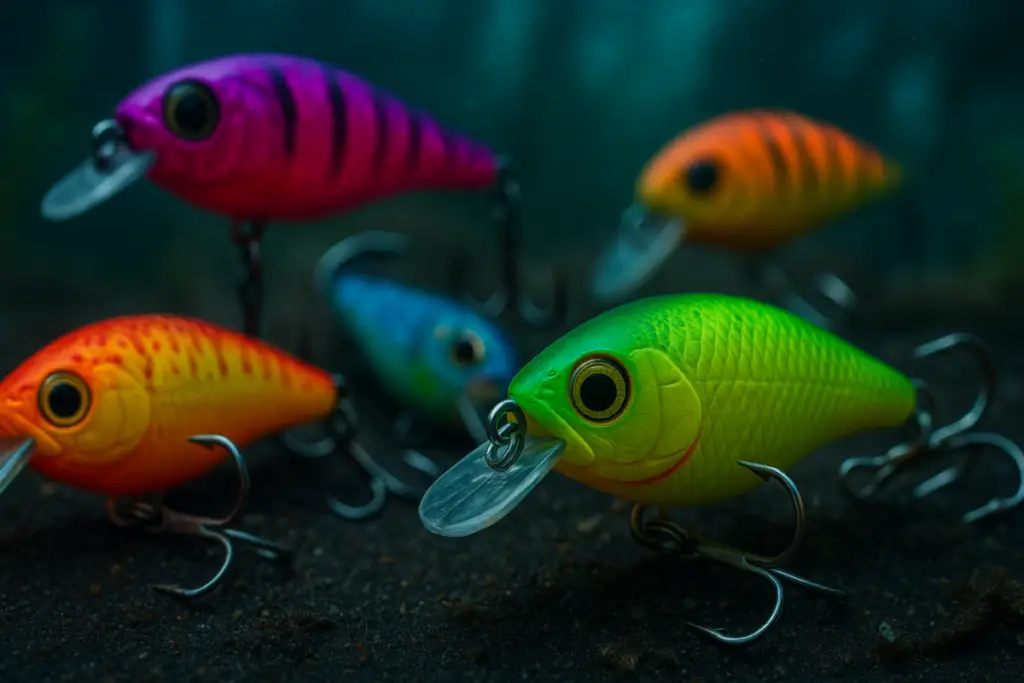
Introduction
You’ve spent hours on the water, casting your favorite bright lure, only to catch nothing but frustration. But then, just when you’re about to give up, a fellow angler reels in a big one using a dull, almost boring-looking lure. What gives?
Understanding why bright lures work—or fail—is key to optimizing your fishing strategy. Let’s dive into the science behind fish vision and lure effectiveness. By understanding how fish perceive colors and how environmental factors affect visibility, you can make better decisions when selecting lures, ultimately boosting your success rate on the water.
The Science of Fish Vision
How Fish See the World: A Deep Dive into Fish Eyes
Fish have evolved uniquely to thrive in underwater environments. Their vision differs significantly from human vision, primarily because their eyes are adapted to see through water rather than air.
| Human Vision | Fish Vision |
|---|---|
| Adapted for air | Adapted for underwater clarity |
| Focuses on depth | Wider field of vision, less depth |
| Limited UV vision | Some fish detect ultraviolet light |
| Color perception varies | Varies by species and environment |
- Fish eyes are uniquely adapted to their underwater environment.
- Unlike human eyes, fish have spherical lenses that allow clear underwater vision.
- These lenses are positioned closer to the retina, giving fish a wider field of vision but less depth perception.
- Some fish, such as trout, can detect ultraviolet light, allowing them to see prey that might be invisible to other species.
How Depth and Light Impact Vision
Water absorbs light differently than air, which drastically changes how colors appear at various depths. The deeper you go, the fewer colors are visible.
| Depth | Color Visibility |
|---|---|
| Shallow | Reds and oranges are visible |
| Medium | Yellows and greens dominate |
| Deep | Blues and greens remain prominent |
| Very Deep | Colors fade, bioluminescence is visible |
- Water significantly affects color perception. As depth increases, colors fade: red disappears first, followed by orange and yellow.
- Blue and green remain visible at greater depths, which is why many deep-sea creatures appear blue.
- According to the National Oceanic and Atmospheric Administration (NOAA), water clarity impacts how colors appear. In murky water, even bright colors can look dull.
Why Bright Lures Sometimes Fail
Too Much of a Good Thing: The Problem with Overstimulation
While bright lures can draw attention, they can also overstimulate or scare fish, especially in clear water. Fish are naturally cautious, and a bright, unnatural color might seem like a threat rather than an opportunity.
- Studies from the Journal of Fish Biology show that overly vibrant colors can trigger a flight response.
- Fish in clear, heavily fished waters are especially prone to being spooked by unnatural hues.
Water Conditions Matter: Matching the Hatch vs. Standing Out
| Condition | Effective Lure Colors |
|---|---|
| Murky Water | Bright colors like chartreuse, orange |
| Clear Water | Natural colors, muted tones |
| Overcast Days | Flashy and contrasting colors |
| Sunny Days | Subdued and natural colors |
- Bright lures work well in murky water or on overcast days.
- In clear water, natural colors are often more effective.
- Experienced anglers suggest mimicking prey colors in clear conditions.
Adapting Your Strategy: When and How to Use Bright Lures

Time of Day and Light Conditions
Fish behavior and visibility change throughout the day. Adjusting your lure color accordingly can make a big difference.
- Morning and evening: Darker or natural-colored lures work best as light is limited.
- Midday: Brighter hues are more visible when sunlight penetrates deeper, making them more effective.
- Night fishing: Glow-in-the-dark or bioluminescent lures can attract nocturnal feeders.
Species-Specific Preferences
- Pike and bass often strike at bright, flashy lures due to their predatory nature.
- Trout and cautious fish may shy away from overly bright options, favoring more subdued, natural hues.
- Saltwater species like tuna and mackerel often respond to metallic and reflective lures that mimic shimmering baitfish.
Practical Tips for Choosing the Right Lure Color
Understanding Local Water Conditions
- Test clarity by dipping your hand or a white object into the water. Note how colors change as they sink.
- Adjust your lure color based on water clarity, weather, and season.
- Be mindful of seasonal shifts in water clarity and light penetration.
Experimenting with Bright and Natural Hues
- Rotate through different lure colors if bites are sparse.
- Keep a color log to track successful hues in various conditions.
- Combine bright and neutral tones to gauge local preferences and maximize effectiveness.
Frequently Asked Questions (FAQs)
- Do fish actually see colors, or just shades?
- Most fish see colors, but their perception varies depending on species and water conditions.
- Are certain colors more effective for specific fish species?
- Yes, predatory fish often prefer bright lures, while more cautious species may favor natural tones.
- Why do some anglers swear by bright lures while others avoid them?
- It often depends on water conditions, target species, and personal experience.
- What is the best color for murky freshwater fishing?
- Bright colors like chartreuse and fluorescent orange are often most effective.
Conclusion
Bright lures can be both a blessing and a curse. They have the potential to attract the biggest catch of your day—or completely spook the fish away. The difference often comes down to the nuances of fish vision and how environmental factors impact lure visibility. Whether it’s the clarity of the water, the time of day, or the fish species you’re targeting, there’s always a layer of strategy involved.
The key takeaway? Make smarter choices by continuously learning and adjusting your techniques. Observe what works, take notes on color and conditions, and don’t be afraid to switch things up when the bite is slow. Sometimes, a small change in your approach can yield big results. Keep experimenting and casting—adaptation is key!
